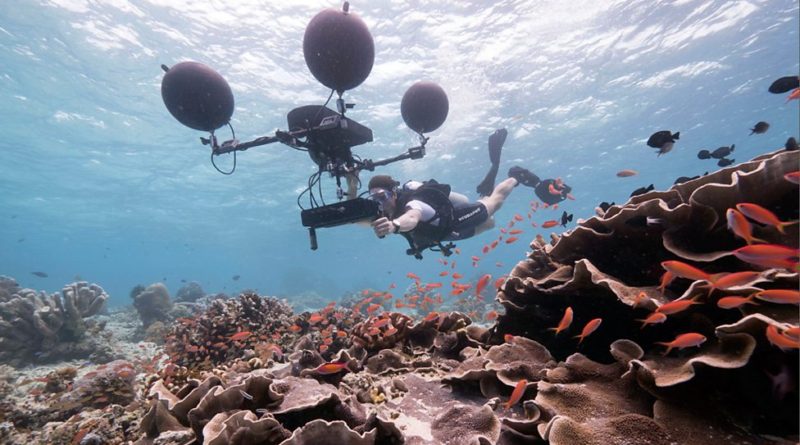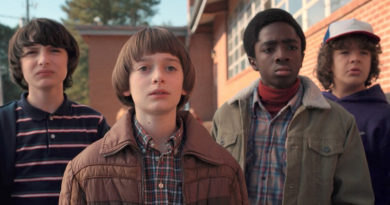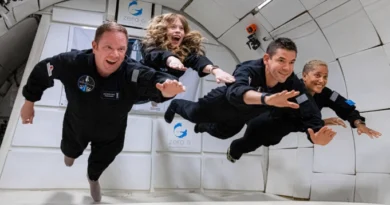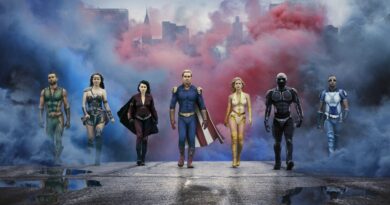Take a deep breath with Blue Planet II
“You come in to the field with a plan,” says cameraman Ted Giffords, “but ultimately you do what nature tells you.”
The plan, for a key sequence in the BBC’s forthcoming Blue Planet II, was to try and film an amazing new behaviour. It’s one of countless new behaviours that viewers will see on Blue Planet II, not least because, as series Executive Producer James Honeyborne says, the science has moved on.
“New discoveries have given us a completely fresh perspective on life beneath the waves. What you’ll see across the series are new stories featuring new species, new places, new behaviours, all filmed in new ways. Our USP is very much newness.”
This particular piece of newness consisted of a marine double act featuring both Killer whales and Humpback Whales. More than a decade ago Blue Planet, the BBC’s last landmark story of the seas, filmed Orca working Herring. ‘Working’ means corralling the fish, bamboozling them, wrangling them in to a tight ball like a border collie with a flock of sheep. Then the Orca stuns one or two with a flap of its tail and ends up with a meal floating deadweight in front of it.
What scientists have observed in recent years – is that Humpback Whales, all 30+ tonnes of them, have started to get in on the act. Humpback Whales are thought to react to the commotion of the Orcas corralling the Herring. Swooping in and opening up their vast mouths, the Humpbacks swim through the buffet that the Orcas have so generously laid on for them, and gobbling up dozens of fish in a single pass. It’s a smash and grab run of epic proportions.
The plan sounded simple: film this behaviour happening. But in order to locate the whales on the infinite fjords of northern Norway, the crew need to do what nature is telling them.
Nature’s message is relayed by seagulls. The footballer Eric Cantona was mocked when he talked about seagulls following trawlers in the hope of finding fish, but his rationale was sound. The seagulls do indeed follow the trawlers when there are Herring to be had, and it is herring that the Orca, and hence the Humpbacks, will follow.
Today is day 10 of a two week shoot, but it’s also the culmination of two years’ work. Producer Jonathan Smith has been following the herring, and thence the Orca and the Humpbacks, for two years for this sequence. He has done stints underwater, diving with a rebreather (to avoid bubbles on camera) in near freezing temperatures. He has tracked the Herring from out in the open Arctic in to the fjords, where for reasons we still don’t quite fathom they have moved just this last year. The whales have followed. They may not be here next year; they weren’t here when Blue Planet I was filmed. This is Smith’s last shoot. He has yet to see a Humpback pull off its heist.
We are so far north, inside the Arctic Circle, stationed on the remote island of Vengsoya, that the days are hopelessly short. It is deep in to November and every day the sun comes up 20 minutes later. Light is at a premium – it’s workable from about 11am today and it will expire at about 2.30pm. And so a converted fishing boat is readied before sunrise and we head out on to the fjords in the mizzle.
Natural history work takes you to remote places but it is rarely a solitary pursuit. As we run north towards the open ocean Smith is messaging a network of contacts – scientists from the Norwegian Orca Survey, fishermen, guides – all of whom are out on boats of their own already. Cameraman Ted Giffords has his own assistance, in the form of a 1,000 millimetres long lens on a giro-stabilised boom arm, handy for spotting gatherings of gulls at several kilometres. He’s glued to his screen, on look out. And Skipper Torre has an app, naturally, for monitoring marine traffic. It tells him where the boats are, what they are and if they’re fishing. Cantona Theory dictates that boats + seagulls = Herring, and Herring = Orcas. Humpbacks are the final variable in the calculus. You need all of the elements, plus the light and a dab of luck, to be in with a chance of a shot. So far they haven’t got any decent footage of the Humpback bursting through with its mouth open – the money shot – in ten days on the water.
Jonathan Smith promises an abundance of Orcas and so inevitably we start off finding none. There is a slight tension as phones are checked, charts scanned and far off, shadowy surface ripples turn out to be everything but whales. There’s not much time.
The sun, when it does rise, barely makes it above the horizon, a pink bedspread laid on the skyline. But as it does, at around 10.30am, a tip-off comes in, and Smith orders the boat to be turned around. We head to Kaldfjorden. It’s a 300 metre deep, 10 mile-long inlet that cuts south and then south-east between stark snow-topped peaks. We motor there to find trawlers and gulls at the far end and still we see… nothing. Smith remains positive – a requirement of the job, I suspect – “These seas contain the most amazing biomass of animals in the ocean,” he says. “Normally we’d have seen loads of Orcas by now.’”
You have to be prepared. Ted Giffords is in charge of the Cineflex camera that will get us the shot, if only the sea life would oblige. The Cineflex allows the boat to be bobbing all over the place while the shot remains still and composed. There are between five and ten Cineflexs of this type in the world – they’re hard to track down because they were originally designed for the American military and they can’t be moved from country to country without specific security clearance. This one has a 4K camera inside its sealed, counter-weighted housing and it can shoot in slow-motion; previous series like The Hunt couldn’t, and they weren’t filmed in such high definition. But higher definition requires more light. Giffords notices that his technical explanations are losing me:
“Basically it’s harder to do but the end result is better. People will notice a difference.”
You can’t not notice an Orca, especially in these flat, calm waters – their dorsal fins can be up to 6ft high on a male, and they travel in pods, usually five or more. Their stately silhouette is unique. Smith and his crew are seasoned spotters, and a tap on the shoulder alerts me to our first sighting, with one, two, then three spouts as the Orcas blow, several hundred metres away. We chug in their direction and on the way spot our other cast members – Humpback ‘blows’ are bushier and more spread out, I’m told. The sight of the Humpbacks’ magnificent tails rising, fluking and slipping away has me excited, but the crew are unmoved: they’re just ‘logging’ or relaxing, not feeding.
Suddenly there are Orca wherever you look down the Kaldfjorden, carving elongated Ms through the surface, while humpbacks rise and dive in tandem. With the sun now up and the mountains glistening it is an awesome spectacle – but it’s a distraction, and I fail to notice what’s happening on our other side, right up by the shore. It’s a group of Orcas, swimming back and forth in formation, so close to the water’s edge it’s as if they’re on watch. Smith is excited. “They’re definitely working fish. This could be about to kick off.”
And then it kicks off.
“Halve the distance between here and the shore,” Smith calls to skipper as he grabs his binoculars. “Pick them up at one o’clock so we can keep the view… Humpbacks at 10.’
It sounds like he’s expecting the animals to arrive on a pre-arranged schedule, until I realise that the hands of a clock are the shorthand amongst captain, producer and cameraman for target location.
The Orca swim away but there’s a shadow visible beneath the surface, heading directly towards where they were. Smith tells Giffords to bring the camera to three or four, Giffords thinks they need to be on the other side, but Smith tells him there’s no time, something is going to happen now, and right on cue small fish start leaping out of the water, churning it up like it’s coming to a fierce boil. The sound makes me spin round just in time to catch sight of 36 tonnes of Humpback whale arcing out and then back down through the surface. I cannot believe what I have just seen.
But the team know instantly that they have not seen enough: Smith and Giffords take a look at what they just filmed, and even though it’s all there in stunning close-up the humpback’s immense mouth only occupies the left of the picture.
“To get that magic it needs to be full frame,” says Smith.
The captain turns the boat around. They know by now that a hungry Humpback will take several passes at a hearty fish supper, and even better, the Orca are back, pushing the Herring even closer to the shore, driving the fish in to the shallows where they can’t escape. With a silvery slick of fish at the surface, the Humpback must surface too. We wait, but not for long. The Cineflex camera hangs over the edge of the boat, and again the whale’s shadow ghosts towards us. This time Giffords is ready and the spectacle is centre stage: as the whale surfaces the water becomes pockmarked and froths with fleeing fish. And then the whale breaks the surface, mouth gaping open, an epic parabola of baleen-plate teeth, humped back, small dorsal and disappearing fluke, before a colossal crash; the vast shadow recedes quietly in to the deep.
The crew holler and celebrate. “We have one!” says Ted Giffords as Smith congratulates his men. It is the first major behaviour shot they have got on this stint, the culmination of a new piece of scientific observation that it’s hard to credit as real until it’s been filmed and shown. And yet still the light remains the most precious commodity, and so minutes later we’re off again in search of another piece of ‘magic’. The ocean is boundless and there’s always more to see. The Blue Planet film crew just have to find it.
“It’s a cliché,” says Jonathan Smith, still with binoculars in hand, “but the only time you don’t get something is when you stop looking.”
And that’s a theme that goes not only for this shoot but for the whole Blue Planet II series.
“We’ve completed 125 expeditions to 38 countries around the world, and our camera teams have worked in every continent and across every ocean,” says James Honeyborne, back in the UK. “One of the things that has really fascinated me during the making of this series is the extent to which we’re on the front line: we’re not just reporting these scientific stories, we’re actually help uncovering new scientific stories. So much so that at least 15 scientific papers are being written on behaviours we’ve filmed. That’s the levels of newness we’re at, that is the great opportunity of being in the sea, and that’s the great excitement for us.”




